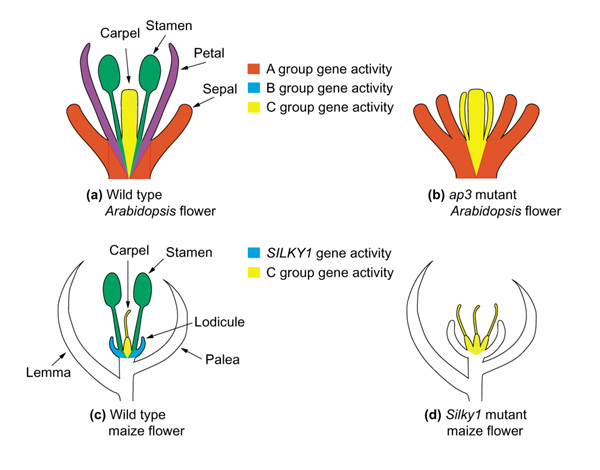Figure 2.

(a)Arabidopsis, like other core eudicots, has flowers that contain four whorls of floral organs: sepals, petals, stamens and carpels. A combination of A, B and C group floral homeotic gene activities results in specification of different organ identities [11]. Petals result from a combination of A+B activities, and stamens result from a combination of B+C activities. (b) Mutation of the B group gene AP3 results in a loss of B group gene activity, resulting in a transformation of petals to sepals and of stamens to carpels. (c) The maize flower is composed of a lemma, a palea, lodicules and the reproductive organs. During maize flower differentiation, abortion of the carpels results in functionally male flowers, while abortion of the stamens results in functionally female flowers. (d) Mutations in the SILKY1 gene result in a transformation of stamens to carpels and the replacement of lodicules with structures that resemble paleas or lemmas [23].
